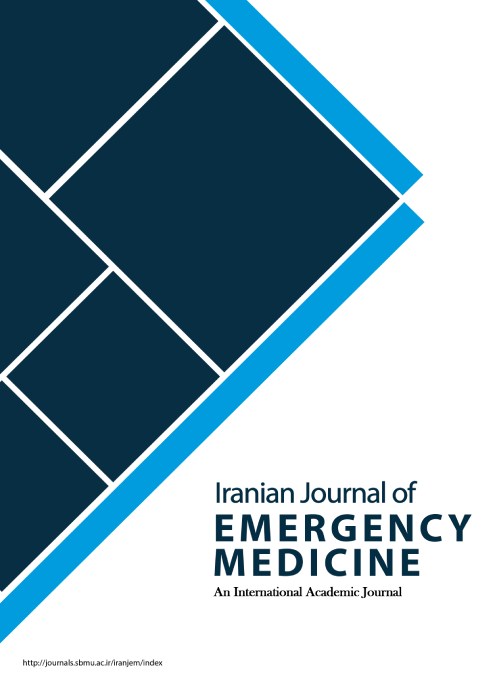Adverse Effects of Intratracheal Intubation by Emergency Medicine Residents; a Cross-Sectional Study
Author(s):
Abstract:
Introduction
Airway management of patients is among the responsibilities of an emergency medicine specialist. To decrease the adverse effects of intubation, sufficient knowledge of the drugs used and proper skill in intratracheal intubation is needed. Therefore, the present study was carried out aiming to evaluate the success rate and adverse effects of intratracheal intubation by emergency medicine residents.Methods
This cross-sectional study was done during 18 months in the emergency department (ED) of Imam Hossein Hospital, Tehran, Iran. All the residents who had spent at least 6 months of their education program in ED and had passed the 2-month specialized course in anesthesiology rotation were included in the study using census method. The researcher, who was a senior emergency medicine resident, would be present at the time of intubation and would gather the required data using a pre-designed checklist. Hypoxia, hypotension, aspiration, esophageal intubation, right main bronchus intubation, fracture of teeth, and tracheal rupture were considered as the studied adverse effects. In addition, more than 3 attempts for intratracheal intubation was considered unsuccessful intubation.Results
Finally, the findings of 100 patients with the mean age of 63.4 ± 16.8 years were analyzed (57% female). Attempts for intratracheal intubation were successful in all cases and 81 patients were intubated on first attempt, 15 on second attempt and 4 on third attempt. There was no unsuccessful intubation that needed more than 3 attempts among the residents. Success rate of intubation was 31 (83%) cases among first year residents, 52 (94%) cases in second year residents and 17 (100%) cases for third year residents. This difference among residents in various levels was statistically significant (p = 0.0014). Hypoxia, esophageal intubation, aspiration, hypotension, and right main bronchus intubation, were the most common adverse effects observed, respectively. No fracture of teeth or tracheal rupture case was observed. Rates of esophageal intubation (p = 0.002) and right main bronchus intubation (p = 0.023) were significantly different among residents of different levels. Number of attempts and adverse effects of intratracheal intubation were significantly related in this study as 75 (88%) cases of the observed adverse effects were seen in those who were intubated on the first attempt. Meanwhile, adverse effects were seen in only 6 (7%) cases that were intubated on the second or third attempt (p Conclusion
Attempts for intratracheal intubation was successful in all the patients but the difference in number of attempts was statistically significant between the residents of various levels. Hypoxia, esophageal intubation, aspiration, hypotension, and right main bronchus intubation, were the most common adverse effects observed, respectively. No fracture of teeth or tracheal rupture case was observed.Keywords:
Language:
Persian
Published:
Iranian Journal of Emergency medicine, Volume:4 Issue: 2, 2017
Pages:
52 to 56
magiran.com/p1672820
دانلود و مطالعه متن این مقاله با یکی از روشهای زیر امکان پذیر است:
اشتراک شخصی
با عضویت و پرداخت آنلاین حق اشتراک یکساله به مبلغ 1,390,000ريال میتوانید 70 عنوان مطلب دانلود کنید!
اشتراک سازمانی
به کتابخانه دانشگاه یا محل کار خود پیشنهاد کنید تا اشتراک سازمانی این پایگاه را برای دسترسی نامحدود همه کاربران به متن مطالب تهیه نمایند!
توجه!
- حق عضویت دریافتی صرف حمایت از نشریات عضو و نگهداری، تکمیل و توسعه مگیران میشود.
- پرداخت حق اشتراک و دانلود مقالات اجازه بازنشر آن در سایر رسانههای چاپی و دیجیتال را به کاربر نمیدهد.
In order to view content subscription is required
Personal subscription
Subscribe magiran.com for 70 € euros via PayPal and download 70 articles during a year.
Organization subscription
Please contact us to subscribe your university or library for unlimited access!


